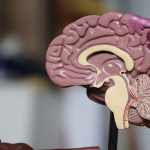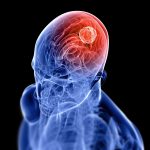Alzheimer’s disease afflicts more than 6.5 million Americans, causing memory loss, confusion, and gradual cognitive decline. Currently, the condition has no cure.
However, the nature of Alzheimer’s makes it uniquely suited to regenerative medicine research.
Table of Contents
What Is Alzheimer’s?
Some people think that Alzheimer’s disease and dementia are interchangeable terms, but they are not. Alzheimer’s is the most common cause of dementia. However, Creutzfeldt-Jakob disease, traumatic brain injuries, and other conditions are also linked to cognitive decline.
A key component of Alzheimer’s disease is the way it changes the brain. Scientists link Alzheimer’s to the development of amyloid plaques and neurofibrillary tangles that damage or destroy neurons and their connections. The loss of neurons causes the brain to atrophy, resulting in dementia.
What Can Regenerative Medicine Do?
Regenerative medicine, also known as stem cell therapy, uses the body’s natural healing response to repair and replace damaged tissues. Stem cells throughout the body may be the key to treating Alzheimer’s; they can potentially target the areas scientists have identified as causes of the condition for potential healing.
Neuron Development
When most cells divide, they create two new cells that exactly replicate the original cell. Stem cells can divide to produce new stem cells, but they can also differentiate to create other specialized cells, such as muscle cells or brain cells.
Brain cells, or neurons, do not divide or replicate at all. Therefore, as Alzheimer’s destroys neurons, the body can’t rapidly produce new ones, leading to cognitive decline.
Stem cell therapy introduces a concentration of stem cells to potentially repair and replace damaged neurons, providing an opportunity to help slow the progression of Alzheimer’s.
Inflammation Reduction
For many years, amyloid plaques and neurofibrillary tangles were thought to be the distinguishing signs of Alzheimer’s. But in recent years, scientists have discovered a third core symptom: inflammation.
Patients with Alzheimer’s experience a sustained inflammatory response that leads to chronic neuroinflammation.
Chronic neuroinflammation is also present in other neurodegenerative disorders, including Parkinson’s disease, multiple sclerosis, and amyotrophic lateral sclerosis (ALS). In Alzheimer’s patients, it may exacerbate both amyloid plaques and neurofibrillary tangles.
However, one of the critical benefits of stem cell therapy is the discovery that mesenchymal stem cells can modify the body’s inflammatory response, reducing sustained inflammation and triggering the body to switch to regenerative activities.
By targeting two of the most common brain changes associated with Alzheimer’s, stem cell therapy shows promise as a viable option to help manage this condition.
This post was written by a medical professional at Stemedix Inc. At Stemedix we provide access to Regenerative Medicine for TBI, also known as stem cells for traumatic brain injury. Regenerative medicine has the natural potential to help improve symptoms sometimes lost from the progression of many conditions.








